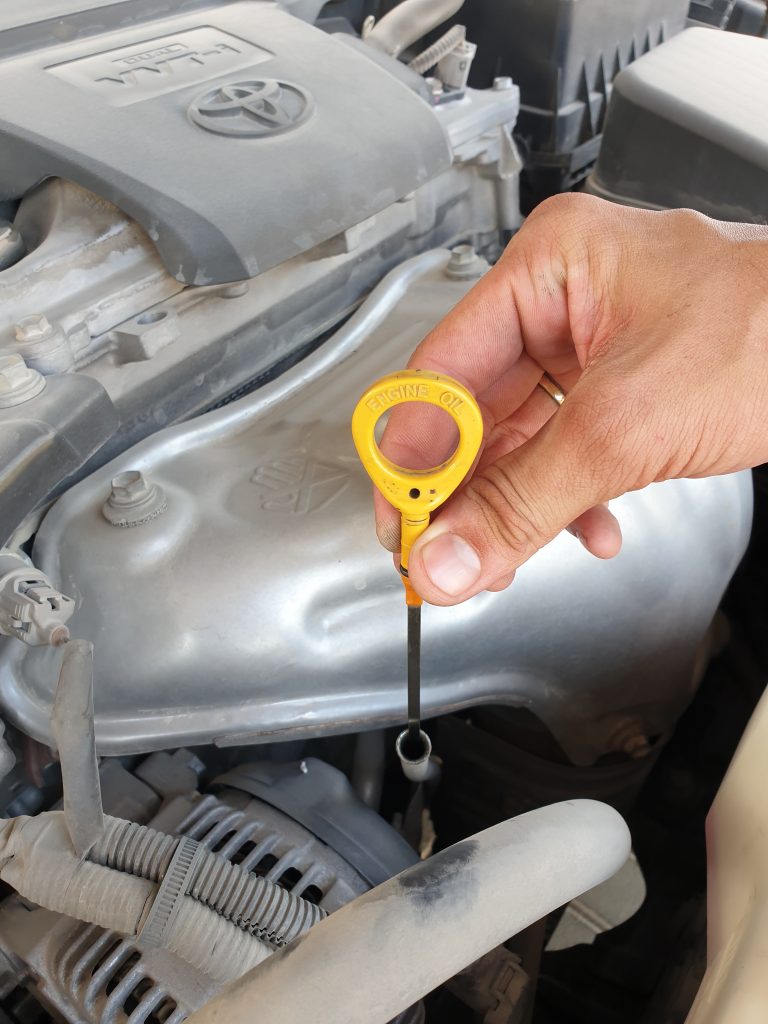What happens if you put too much oil in your car?
There is no simple answer to the question, but overfilled engine oil can damage the engine. The intensity of damage is directly proportional to the overfilled quantity. It also depends upon the type and size of the engine. The lucky will only get thick white smoke from the exhaust of the vehicle. But in the worst-case scenario overfilling can destroy the engine.
What is engine oil overfill?
In petrol engines, four or more cylinders, if overfilled quantity is small like a quart (1Liter) or less, it is overfilled but unlikely to bring any noticeable problem. A liter or two of overfill engine oil is unlikely to cause any problems in big diesel engines.
Not recommended, but extremely unlikely for a liter of overfilled engine oil to cause engine knock, oil leak, white smoke, or any other serious issue. Problems of massive overfill engine oil would be oil leaking, oil-burning smell, and in rare cases cloud of thick white smoke from the exhaust, both in typical diesel and petrol engines of cars and trucks.
Use a dipstick to check the level, drain the extra oil from the drain plug or use the Pela oil extractor pump to suck the oil from the dipstick stalk. Hire a professional cleaning service to wash the engine. In most cases, the engine will be safe without any long-term harm.
What will happen with the overfilled engine?
Now is the case with too much oil in the engine. If you massively overfill the engine. The crankshaft is spinning in the oil or the web of the crankshaft whipping the oil. Whipping or churning can produce foaming and a lot of fumes. Because PCV (blowby or engine vent valve) connects to the inlet manifold, the engine will start sucking the oil fumes or oil mist. Burning oil will produce a thick white cloud of smoke from the exhaust.
Overfilled Diesel Engines
In a diesel engine, overfilling can destroy the engine due to engine runaway. Diesel engine runaway is a situation where you don’t have control over the engine speed. In a diesel engine, speed is not regulated by the intake air. Speed is regulated by the quantity of diesel fuel injected into the combustion chamber. In massively overfilled engines, the spinning of a crankshaft in the oil can produce enough mist and fumes to cause engine runaway. You turn the key off, but the engine will not stop with the unregulated supply of fumes coming through the PCV. A diesel engine can run freely on the oil mist/fumes move toward the intake manifold through the PCV valve. Increased speed will produce more fumes that mean more power for the engine and more RPM. This fuel-speed loop will continue until the engine is damaged and stop.

How to check the oil level with a dipstick?
Park the vehicle on level ground and turn off the engine. Most manufacturers recommend at least 5 minutes wait time after the engine switched off; for the oil to return into an oil sump before using a dipstick. Open the hood and find a dipstick. Check the owner manual if you cannot find it. A dipstick is usually an oval, inch-size yellow metal loop on top of a long vertical pipe or metal stalk. Dipstick Loop is white or yellow color for engine oil and red for transmission oil. Check the vehicle manual if in doubt.
Use a lint-free rag or paper towel in one hand, pull the metal loop to remove the dipstick, clean it with a rag or paper towel. After wiping the end of a dipstick with a rag, push it back into the stalk again. Make sure it is inserted fully into the position. There is an edge close to the metal loop to indicate the seating. Wait a few seconds and remove the dipstick again to determine the oil level.
At the end of the dipstick check the oil reach. Look for the wet shiny oil mark to determine where the oil ends. There are markings or holes to indicate the Low (L) and Full (F) level of the engine oil. Oil must end between the two marks. It is considered good if the oil level is close to the upper or full mark
Summary:
It is strongly recommended not to overfill an engine. It is better to be at F (Full) or a few millimeters below the Full mark on your dipstick. If you accidentally fill 1-2 millimeters above the Full mark, it is still OK but not recommended. A massively overfilled engine oil will harm the engine. Massive overfilling in diesel engines can cause runaway that will ultimately destroy the engine.
What are the signs of overfilling your oil?
Massive overfilled engine: Problems would be oil leaking, a thick cloud of white smoke from the exhaust pipe, strange intermittent noises, and oil burning smell both in a typical diesel and petrol engines of cars and trucks. In diesel engines overfilling can cause uncontrollable engine speed (RPM) or “runaway”; In most cases, a runaway will almost always destroy the engine.
What would happen If you slightly overfilled a vehicle engine oil?
Slightly overfill is a case when oil is 1-2 millimeters above the max mark at the dipstick. It is better to avoid overfill. But slightly overfill is extremely unlikely to bring any noticeable problem.
